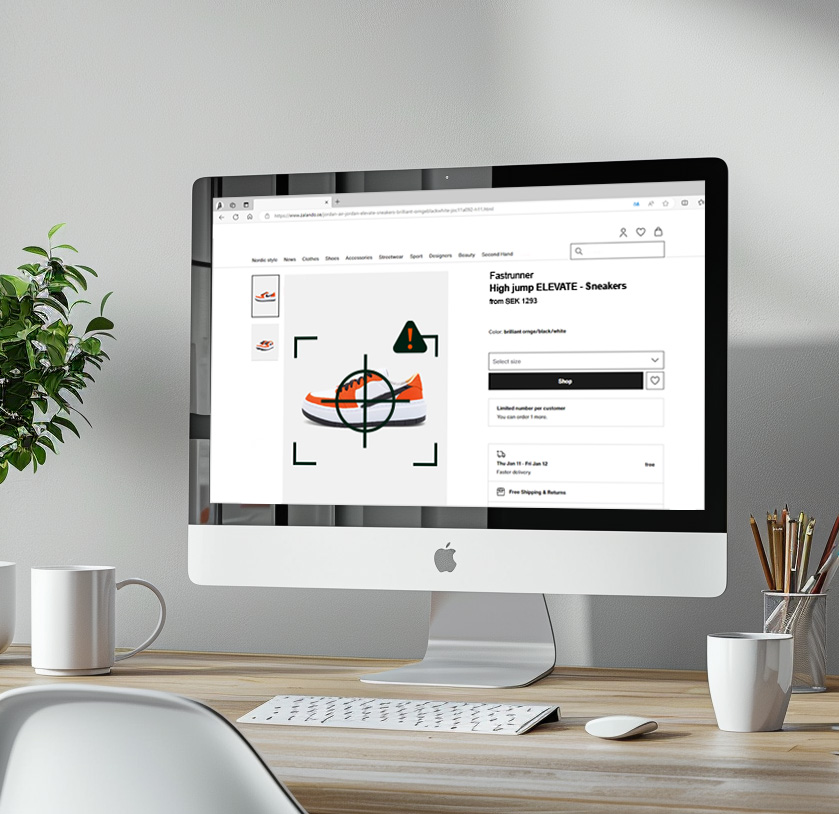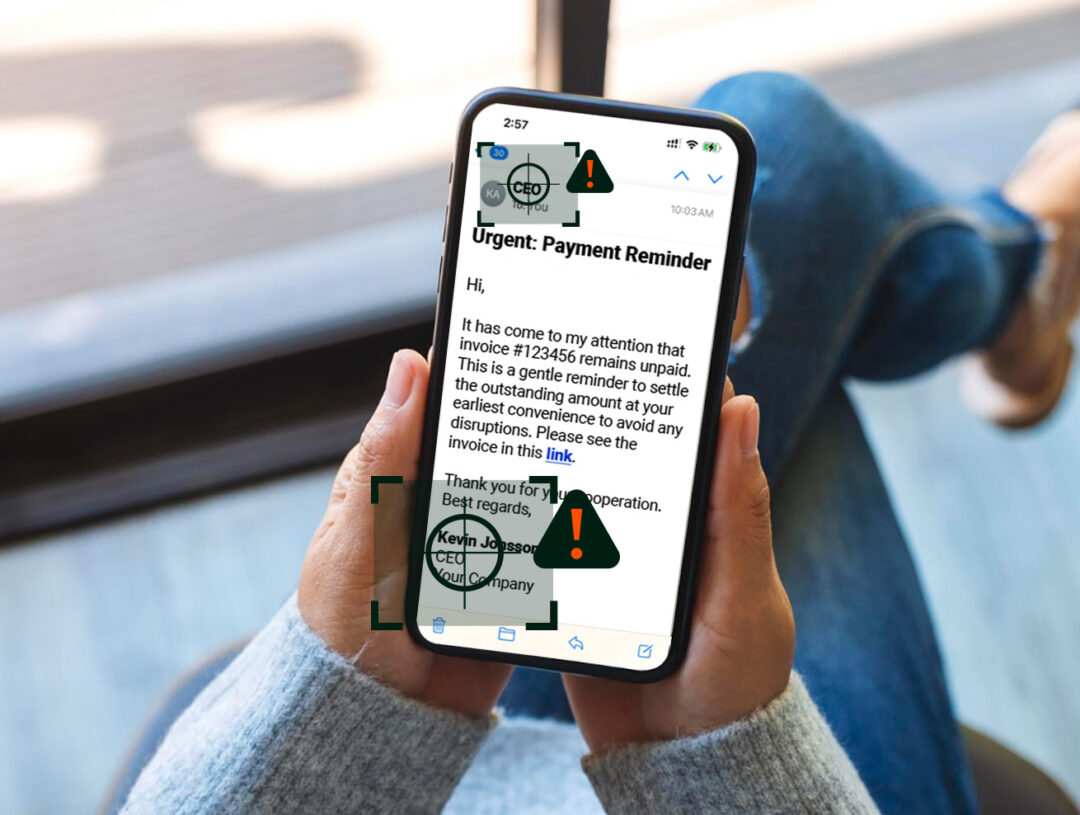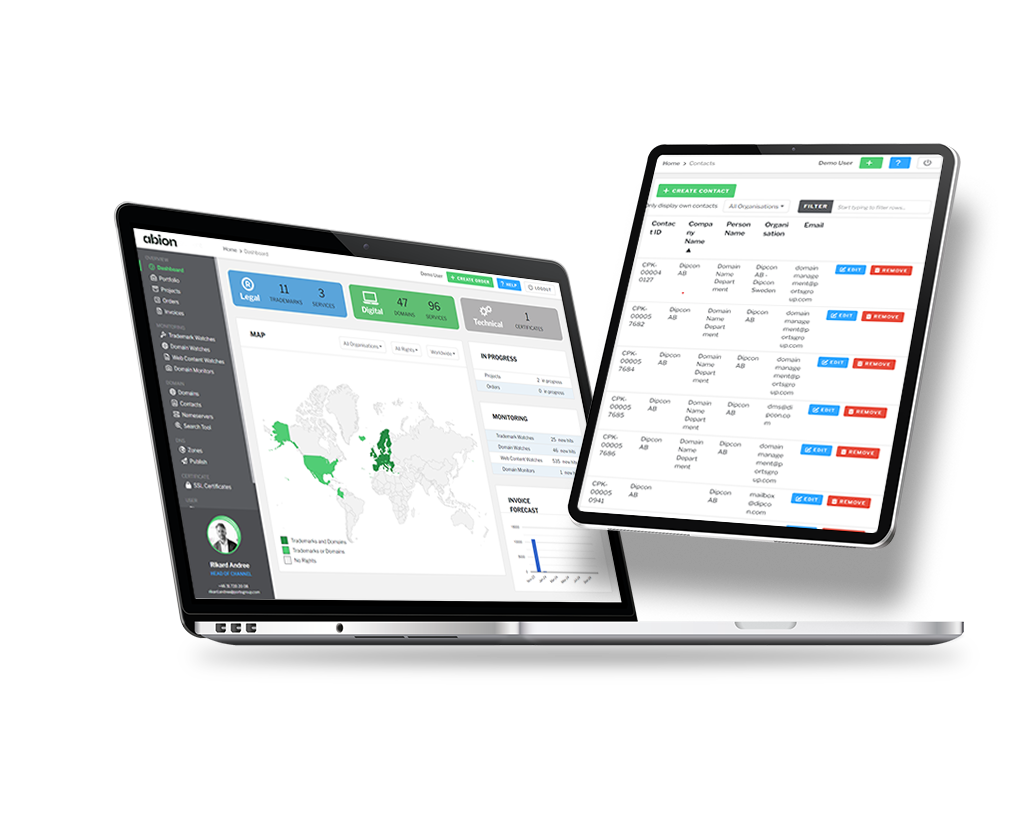
Trade Mark Protection - From Application to Enforcement
From preparation to completed application, registered trade mark and active surveillance – we help you secure the exclusive right to your trade mark and protect it from potential infringements.
Secure Brand Exclusivity
Ensure exclusivity to your unique brand - illegal for others to use.
Build Trust
Strengthen credibility and loyalty with your customers.
Act Against Infringements
Enable early detection and elimination of potential Infringements
What is Trade Mark Protection?
Trade mark protection secures exclusive rights to one of your company’s most valuable assets – its unique brand. By protecting it, you prevent others from using it illegally for their own gain, and if they do, they commit trademark infringement and may owe compensation. Trade mark protection also safeguards you from unintentionally infringing on others' rights. Once registered, you can be confident that your trade mark is unique within your chosen market and class.

Types of Trade Mark Protection
There are several types of trade mark protection, each serving different purposes based on how you want to safeguard your brand from trademark infringement. Here’s a brief overview of that you need to consider protecting after a trademark registration:
Word Marks
Protects the brand name or slogan in a standard character format. This type of protection ensures that no one else can use a similar name or phrase in your industry.
Design Marks (Logos)
Protects a specific design, logo, or stylised word that represents your brand. Design marks protect the visual elements of your trade mark.
Combined Marks
Protects a combination of words and designs (e.g., a logo that includes your brand name). This is a comprehensive approach covering both the text and the design.
Sound Marks
Protects specific sounds that are distinctive to your brand, such as the audio branding of a company jingle.
3D Marks
Protects three-dimensional shapes that are distinctive to your brand, such as the shape of a product or its packaging.
Colour Marks
Protects a particular colour or combination of colours used to identify your brand (e.g., the specific red used by Coca-Cola).





Understanding Trade Mark Protection
Why is it important to protect your brand? What are you protecting it from? Infringements on the trade mark specifically involves unauthorised and damaging activities on the internet. Here are some of the key examples of trade mark infringements:
This involves the sale of counterfeit goods through online platforms, where unauthorised sellers replicate or imitate the company's products, often infringing on trademarks and copyrights.
Registering or using a brand's trademark that closely resemble a legitimate brand's domain to mislead users or profit from the brand's reputation.
Creating fake websites that imitate a legitimate brand's site to deceive consumers, for example to sell fake or non-existing products, often also involves cybersquatting.
Setting up fake profiles or fake social media accounts to mislead or engage in fraudulent activities.
Sending deceptive emails that appear to be from a legitimate brand to trick recipients into providing sensitive information.
Essential Requirements for Trade Mark Protection
Trade mark infringement can be complex, but a registered trade mark gives you the power to take legal action against unauthorised use, including court orders to stop it and compensation for damages. Registering your trade mark grants exclusive rights, enhances your brand's credibility, and increases business value by opening doors for licensing opportunities and preventing costly rebranding. This allows you to focus on growth without legal worries.
As a trade mark owner, vigilance is key. If you suspect infringement, taking immediate legal action is essential, as it can significantly impact your financial stability and brand reputation. Protecting your mark not only preserves its distinctiveness but also ensures your brand's ongoing success.
To qualify for trade mark protection, a trade mark must be distinctive, non-misleading, and unique within its market. It should not closely resemble existing trade marks and must avoid merely describing the goods or services it represents.
Start Safeguarding Your Brand – Reach Out Today
Let Abion protect your trade marks and intellectual property from infringement. Fill in the form to get started!
Our Complete Guide to Trade Mark Protection
- What is The Value of Trade mark Protection?
- Why is trade mark protection important?
- Requirements to secure trade mark protection
- Which companies should apply for trade mark protection?
- When should you apply for a trade mark?
- Preparations for the trade mark application
- Register a trade mark - step by step
- How to apply for EU or international trade mark protection
- Protected trade mark - what do you need to think about?
- How Abion can help you
- Summary
What is The Value of Trade Mark Protection
Brand protection is about securing exclusive rights to one of the most valuable assets your company has – its own, unique brand. By protecting your brand, you make it illegal for other actors to use it for their own purposes and benefit. Companies that illegally use a protected trade mark commit trade mark infringement, for which they can be reported and liable for compensation to you as the rights holder. Trade mark protection also safeguards you from accidentally infringing someone else's intellectual property rights. Once your trade mark registration is approved, you can feel secure that your trade mark is unique and does not resemble any other trade mark in the market and classes you have chosen to protect yours in.
Trade mark protection involves registering your trade mark with the local Patent and Registration Office, EUIPO, or WIPO for European protection, establishing your rights in the relevant market(s). This ensures that you own all rights to the trade mark, including the domain and relevant web security elements surrounding it. Given the challenges of incorporating a trade mark to the point where it is legally protected, we always recommend registering your trade mark.
In practical terms, trade mark protection means that a trade mark is either registered with the local Patent and Registration Office or with EUIPO or WIPO for European protection), established in the relevant market(s), and you own all rights to it, both when it comes to the trade mark in itself, the domain and the relevant web security elements to secure it (e.g.; hosting DNS, etc.) around it. Incorporating a trade mark to the point where it is legally considered to enjoy trade mark protection is difficult, which is why we always recommend registering your trade mark.
Requirements to Obtain Trade Mark Protection
To have your trade mark registered and thus protected, certain requirements must be met. These requirements ensure that all registered trade marks are unique, excluding the risk of confusion with older, registered trade marks. This guarantees that your trade mark is legal and not infringing.
Which Companies Should Apply for Trade Mark Protection?
Securing the exclusive legal rights for your own brand is in the interest of all companies. The exclusivity protects what you have already built and want to continue building in the future - something that is important regardless of the industry you operate in, how big you are and what market you operate in.
In addition to protecting your brand legally, it is also important to protect your domains and web security. The fact that a trade mark is protected by law certainly means that infringers can face criminal penalties, but unfortunately that doesn't stop them from trying. This is where other protection, such as domain monitoring, various cyber security certificates and firewalls are needed. Combining these different tactics help you build a robust technical wall around your brand.
Protecting the entire brand on all these different levels comes with a certain cost, but is nevertheless something that should be prioritised by all companies. All are investments will bring return many times over.

Brand Protection Adapted to Your Specific Business
What protection you need depends on factors like your business, industry and what markets you are active on. Find out more about Brand protection tailored for your industry.
When Should You Apply for Trade Mark Protection?
In order to be granted trade mark protection, you must be able to justify how you intend to use your trade mark both today and in the next five years. Therefore, you should not register a trade mark just for the sake of registration, without the intention of using it.
Applying for trade mark protection is best done when you have a clear plan for how and when you will use the trade mark. As mentioned above, according to the usage requirement, you have five years to be able to prove that you are using the trade mark. If you fail to do so, there is a risk that you may have your trade mark deregistered and that the protection will cease.
Preparations for the Trade Mark Application
The preparatory part of a trade mark application is important. The more prepared you are, the easier and smoother it will be to complete the application and the better your chances of getting it right.
The preparations are primarily about making sure you have what it takes to have the right to brand protection in your country. You should also research the competition in the market as well as identify any possible business risks.
In short, it can be said that the following are things you need to be aware of before proceeding with a trade mark application:
- Type of trade mark
What type of trade mark do you want to register? Trade mark protection can be obtained for several different kinds of trade marks – for example, a figurative mark (logo), a word mark, a design of a product or a slogan. - Distinctiveness
A trade mark must be clearly distinguishable from others in order to be approved for registration. Check that your company's logo cannot be confused with anything else on the market. Searches for registered trade marks can be made in your country's Trade mark Database . - Clear definition
You must be able to define how your brand is to be used, for which goods/services and in which market. - Classification
Trademarks are registered in different trade mark classes depending on the goods/services to be marketed. In order to properly protect your trade mark, it is important that you know which classification you should register your trade mark in. In total, there are 45 different trade mark classes to choose from, of which two-thirds are for goods and one-third are for services.
Step-by-Step to Apply for Trade Mark Protection in Your Country
Applying for trade mark protection in your country requires careful preparation and attention to detail. By following the correct steps, you can ensure that your brand receives the proper protection and avoid delays or costly issues. Below is a simplified breakdown of the process to help guide you through trade mark registration.
How to Apply for EU or International Trade Mark Protection
Trademark protection in the EU and internationally is handled by authorities other than PTO.
For applications in the EU, the process is very similar to your local country's, while the international process for registrations looks a little different.
If you want to protect your brand in all EU countries, you make an application to the EU's common intellectual property rights authority, EUIPO - European Union Intellectual Property Office. The advantage of an EU application is that you can obtain registration in all EU countries through a single application and a single fee. This is commonly called an EU trade mark.
International trade mark registration in countries outside the EU is done with WIPO, the World Intellectual Property Organization. Like an EU application, the big advantage of a WIPO application is that you are able to submit your trade mark to several jurisdictions through one application. All administration is gathered in one and submitted through WIPO. In your application, you indicate in which countries you want the protection to apply. In total, there are about a hundred countries and intergovernmental organisations to choose from.
In contrast to an EU trade mark application, an international trade mark application must be based on a national trade mark registration (here both your local country and an EU registration work as a basis).
In other words, you must first apply to PTO or EUIPO. Once that application is registered, you can then apply for an international registration. If you apply for an international registration within 6 months of your trade mark being registered with PTO or EUIPO, you can apply for international registration with so-called priority, see more under the next heading below.
If you only wish to apply in one or a few other countries, regardless of whether it is an EU country or not, you should send your application directly to that country's own intellectual property authority. Preferably with the help of a local representative, as the national authorities usually communicate in the local language and the regulations may differ. For European countries, an EU trade mark are in many cases cheaper than country specific trade marks.
Possible to request a priority
If you have applied for trade mark registration in your own country or the EU, you can request priority if you also make an application to another country or internationally within six months. The priority means that you can count the day you submitted the application in your own country as the submission date also for the application to EUIPO or WIPO. It can be beneficial if someone else has applied for protection for an identical or similar trade mark and a conflict of interest arises.
When You Have a Protected Trade Mark - What do You Need to Think About?
After an approved registration, you have exclusive rights (trademark rights) to your trade mark for ten years, after which you can extend the registration by another ten years at a time for as long as you wish. This applies both within the EU and globally. Renewal can be done an unlimited number of times and is necessary to maintain the validity of the trade mark and your rights as a holder.
Furthermore, it is important that you manage your brand effectively after a registration approval, and protect your trade mark rights against potential threats and infringements. This requires effective and continuous brand monitoring.
The Importance of Guarding Your Brand
- Why it is important to guard the brand
- How to monitor the brand
- What monitoring solutions should all companies employ
- How should you act in the event of a breach or an infringement

World-Class Protection with Abion
Trade mark registration and protection require expertise and resources. To ensure your brand is safeguarded from the start, we're here to help. As specialists in brand protection, domain management, and web security, we protect your brand. Our 360-degree solutions help develop a comprehensive IP strategy, ensuring long-term protection.
We offer a complete range of trade mark services, including brand classification, preliminary investigations, application submissions, handling objections, and negotiation of solutions. Our thorough preliminary investigation ensures your brand's distinctiveness before finalising, saving time and money.
Once registered, our surveillance services monitor for threats and infringements, providing early intervention through security services, hit reviews, and action plans for potential breaches. Contact us for more information.
Summary
- Secure your exclusive rights
- It is of the utmost importance that you protect your business, its assets and what you have built by registering your brand
- With Abion, the process will be smoother, safer and easier for you
Do you want to know more about trade mark protection and how we can help you protect your unique brand? Contact Us
FAQ About Trade Mark Protection
Yes, a sound trade mark can be registered in multiple jurisdictions through international systems like the Madrid Protocol or the European Union Trade Mark (EUTM). This ensures your sound is protected across different countries and markets.
Trademark law is a branch of intellectual property law that provides legal protection for distinctive signs, symbols, logos, words, phrases, or any combination thereof that identify and distinguish the source of goods or services of one party from those of others. The primary purpose of trademark law is to prevent consumer confusion by ensuring that consumers can accurately identify the origin of products and services.
Registering a trademark (also known as a registered mark) offers exclusive rights, legal protection, increased business value, and potential for licensing and franchising. It is a valuable step for any business looking to protect its brand.
Yes, you can obtain trademark protection through registration or through established use. For established use, the trademark must be very well-known and have been in use for a long time. The burden of proof for this lies with you as the owner.
Trademark protection is valid for ten years but can be renewed indefinitely. As long as the protection is renewed every ten years, it can effectively last indefinitely.
Trademark protection requires, among other things, distinctiveness and a clear definition of how the mark will be used in the coming years. There must also be no risk of confusion with existing trademarks.
Trademark registration involves several challenges, including naviga legal complexities, the requirement for non-EEA applicants to have a local representative, and ensuring that the trademark meets all traditional criteria, such as distinctiveness and non-descriptiveness. Additionally, conducting a thorough trademark search, managing costs, and addressing potential opposition from third parties are also key challenges in the process.
A Trademark Office is a government agency responsible for the registration, management, and enforcement of trademarks within a specific jurisdiction. The primary functions of a Trademark Office include examining trademark applications, granting trademark registrations, maintaining a registry of trademarks, and providing information and resources related to trademark law.
Trademark protection is essential for businesses because it helps maintain brand identity, prevent misuse, and avoid legal disputes and rebranding costs.
For protection within the EU, you apply at EUIPO, and for international protection, you apply at WIPO after applying for protection in your country or the EU.
No, but without trademark protection, you lack exclusive rights to the trademark. Anyone can therefore use your trademark and take advantage of what you've built.
All about brand protection
Increase your brand protection knowledge and optimise the security of your unique brand. Together, we secure your rights to what you have built.
Articles on trade mark protection
Identify fraud
Learn to identify potential threats to your brand and disarm them before they become a problem. Here you can read more about different types of trade mark infringement and how you can best protect yourself against them.
Fraud and infringement
World-class brand protection
We offer a full range of services for legal, digital and technical brand protection. Let us help you protect your company's unique characteristics in the best possible way.



